Dr. Andrew W. Saul www.doctoryourself.com and by the Journal Of Orthomolecular Medicine.
The importance of diet in relationship to optimal health has been understood throughout recorded history. Hippocrates regarded food as a primary form of medicine more than 2,500 years ago. Records from ancient Egypt as far back as 5000 BC show the use of specific foods to treat various conditions. 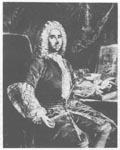 True scientific understanding of diet did not occur until the 18th century, beginning with the work of French physicist Rene de Reaumur, who is credited with conducting the initial research of digestive chemistry. Later in that same century, Reaumur’s work was built upon by chemist Antoine Laurent Lavoisier, who, prior to being guillotined during the French Revolution, provided the scientific foundation for the study of how the body metabolizes food to create energy.
True scientific understanding of diet did not occur until the 18th century, beginning with the work of French physicist Rene de Reaumur, who is credited with conducting the initial research of digestive chemistry. Later in that same century, Reaumur’s work was built upon by chemist Antoine Laurent Lavoisier, who, prior to being guillotined during the French Revolution, provided the scientific foundation for the study of how the body metabolizes food to create energy.
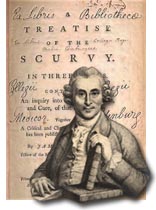 The first person to show a direct link between disease and a lack of a specific nutrient was James Lind, a physician in the British navy, who discovered that sailors on long voyages without rations containing citrus fruits developed bleeding gums, rough skin, poor muscle tension, and slow-healing wounds, all symptoms characteristic of scurvy. In 1757, in one of the first controlled medical experiments, Lind demonstrated that when sailors were supplied with lemons, limes, and oranges, scurvy could be prevented. As a result of his findings, Captain James Cook made it mandatory that every English sailor be supplied with rations of lemons and limes, enabling to sail around the world scurvy-free, as well as supplying them with the nickname “limeys.” Today, it is well known that scurvy is due to vitamin C deficiency.
The first person to show a direct link between disease and a lack of a specific nutrient was James Lind, a physician in the British navy, who discovered that sailors on long voyages without rations containing citrus fruits developed bleeding gums, rough skin, poor muscle tension, and slow-healing wounds, all symptoms characteristic of scurvy. In 1757, in one of the first controlled medical experiments, Lind demonstrated that when sailors were supplied with lemons, limes, and oranges, scurvy could be prevented. As a result of his findings, Captain James Cook made it mandatory that every English sailor be supplied with rations of lemons and limes, enabling to sail around the world scurvy-free, as well as supplying them with the nickname “limeys.” Today, it is well known that scurvy is due to vitamin C deficiency.
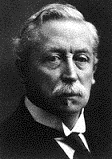 Christiaan Eijkman
Christiaan Eijkman
1858-1930 Christiaan Eijkman, a Dutch physician, is famous for his nutritional research. In 1893 he discovered that a diet of polished (overkvernet) rice causes beriberi, and was able to produce the disease experimentally in birds. He discovered vitamin B.
In 1897, Christiaan Eijkman proved that an element in unpolished rice was essential to proper functioning of the nervous system and carbohydrate metabolism, and that a deficiency in that ingredient could cause beriberi and other diseases. In 1929, his research resulted in him sharing the Nobel Prize with British biochemist Sir Frederick Gowland Hopkins for physiology and medicine.
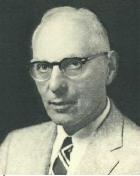 Max Gerson, MD
Max Gerson, MD
1881-1959
Hall of Fame 2005
| “I know of one patient who turned to Gerson Therapy having been told she was suffering from terminal cancer and would not survive another course of chemotherapy. Happily, seven years later, she is alive and well. So it is vital that, rather than dismissing such experiences, we should further investigate the beneficial nature of these treatments.” |
| ”” H.R.H. Charles, Prince of Wales |
In the late 1920s, Max Gerson, M.D., began observing that cancer could be cured with nutrition in tandem with systemic detoxification. Charlotte Gerson writes: “Dr. Gerson found that the underlying problems of all cancer patients are toxicity and deficiency. One of the important features of his therapy was the hourly administration of fresh vegetable juices. These supply ample nutrients, as well as fluids to help flush out the kidneys. When the high levels of nutrients re-enter tissues, toxins accumulated over many years are forced into the blood stream. The toxins are then filtered out by the liver. The liver is easily overburdened by the continuous release of toxins and is unable to release the load… Dr. Gerson found that he could provide help to the liver by the caffeine in coffee, absorbed from the colon via the hemorrhoidal vein, which carries the caffeine to the portal system and then to the liver. The caffeine stimulates the liver/bile ducts to open, releasing the poisons into the intestinal tract for excretion.”
The Gerson Therapy is not specifically a cancer treatment but rather a metabolic treatment, one that cleanses while strengthening the body’s ability to heal itself. Not surprisingly, the program is effective against a wide variety of serious illnesses. Dr. Gerson’s approach has been shown, for over seven decades, to greatly improve both quality and length of life in the sickest of patients.
There is no higher compliment possible than this summation by the great Albert Schweitzer, M.D., Nobel Prize laureate: “I see in Dr. Max Gerson one of the most eminent geniuses in medical history.”
William McCormick, M.D.
1880-1968
Hall of Fame 2004 “Vitamin C is a specific antagonist of chemical and bacterial toxins.”
Over 50 years ago, it was Toronto physician William J. McCormick, M.D., who pioneered the idea that poor collagen formation, due to vitamin C deficiency, was a principal cause of diverse conditions ranging from stretch marks to cardiovascular disease and cancer. This theory would become the foundation for Linus Pauling and Ewan Cameron’s decision to employ large doses of vitamin C to fight cancer.
Over twenty years before Pauling, McCormick had already reviewed the nutritional causes of heart disease and noted that four out of five coronary cases in hospital show vitamin C deficiency. McCormick also early proposed vitamin C deficiency as the essential cause of, and effective cure for, numerous communicable illnesses, becoming an early advocate of using vitamin C as an antiviral and an antibiotic. Modern writers often pass by the fact that McCormick actually advocated vitamin C to prevent and cure the formation of some kidney stones as far back as 1946. And fifty years ago, McCormick “found, in clinical and laboratory research, that the smoking of one cigarette neutralizes in the body approximately 25 mg of ascorbic acid.” His early use of gram-sized doses to combat what then and now are usually regarded as non-deficiency-related illnesses set the stage for today’s 100,000 mg/day antiviral/ anticancer vitamin C IV’s.
Albert von Szent-Györgyi, PhD
1893-1986
Hall of Fame 2005
| “Discovery consists of seeing what everybody has seen, and thinking what nobody has thought.” ”” Albert Szent-Györgyi |
Dr. Szent-Györgyi depended on thought, as did Pauling, rather than on equipment.” wrote Abram Hoffer. Albert Szent Györgyi was born in Hungary and spent the First World War in the Austrian army. After the war, he studied at Groningen and with Hopkins at Cambridge. C.  It was here that he became interested in a chemical agent, present in plant juices, which had the effect of delaying oxidation, such as the browning of a sliced apple exposed to the air. He suggested that this agent, which was also present in cabbages and oranges, was the mysterious Vitamin. By 1933, he had isolated the substance in kilogram lots and named it “ascorbic acid” which means “the acid which prevents scurvy.” “During World War II, Szent Györgyi was in constant danger from the Nazis and finally took refuge in the Swedish legation in Budapest. The Gestapo raided the legation but he escaped and remained in hiding for the rest of the war. He was rescued by the Russian armies and taken to Moscow on the direct orders of Molotov. He was well treated by the Russians but, knowing he could not work in their system, he went to the United States in 1947 where he settled at the Marine Biological Laboratories at Woods Hole, Massachusetts.” (Excerpted from Albert Szent-Györgyi and Vitamin C, by Nigel Bunce and Jim Hunt, University of Guelph, 1987) “Albert Szent-Györgyi, PhD, won the 1937 Nobel Prize for his discovery of vitamin C. In fact, it was he who named the vitamin ascorbic acid and first predicted its use in cancer. When Szent-Györgyi was on his deathbed, at the age of 93, Linus Pauling flew from California to Szent-Györgyi’s home at Woods Hole, Mass., to say goodbye. Holding his hand, Linus said wistfully, “You know, Albert, I always thought that someday we two would work together.” Szent-Györgyi looked up and said, humorously, “Well, if not in this life, then maybe in the next.” Pauling himself died a few years later, also at age 93. They were two of the greatest thinkers of the 20th century. “(Ralph W. Moss, Ph.D., Cancer Decisions Newsletter, July 18, 2004)
It was here that he became interested in a chemical agent, present in plant juices, which had the effect of delaying oxidation, such as the browning of a sliced apple exposed to the air. He suggested that this agent, which was also present in cabbages and oranges, was the mysterious Vitamin. By 1933, he had isolated the substance in kilogram lots and named it “ascorbic acid” which means “the acid which prevents scurvy.” “During World War II, Szent Györgyi was in constant danger from the Nazis and finally took refuge in the Swedish legation in Budapest. The Gestapo raided the legation but he escaped and remained in hiding for the rest of the war. He was rescued by the Russian armies and taken to Moscow on the direct orders of Molotov. He was well treated by the Russians but, knowing he could not work in their system, he went to the United States in 1947 where he settled at the Marine Biological Laboratories at Woods Hole, Massachusetts.” (Excerpted from Albert Szent-Györgyi and Vitamin C, by Nigel Bunce and Jim Hunt, University of Guelph, 1987) “Albert Szent-Györgyi, PhD, won the 1937 Nobel Prize for his discovery of vitamin C. In fact, it was he who named the vitamin ascorbic acid and first predicted its use in cancer. When Szent-Györgyi was on his deathbed, at the age of 93, Linus Pauling flew from California to Szent-Györgyi’s home at Woods Hole, Mass., to say goodbye. Holding his hand, Linus said wistfully, “You know, Albert, I always thought that someday we two would work together.” Szent-Györgyi looked up and said, humorously, “Well, if not in this life, then maybe in the next.” Pauling himself died a few years later, also at age 93. They were two of the greatest thinkers of the 20th century. “(Ralph W. Moss, Ph.D., Cancer Decisions Newsletter, July 18, 2004)
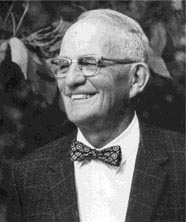 Roger J. Williams, Ph.D.
Roger J. Williams, Ph.D.
1893-1988
Hall of Fame 2004 “When in doubt, try nutrition first.”
Another pioneer in the concept of orthomolecular nutrition was Roger Williams, Professor of Chemistry, discoverer of pantothenic acid (vitamin B5 ), and founder and director of the Clayton Foundation Biochemical Institute at the University of Texas which, under the directorship of Dr. Williams, was responsible for more vitamin related discoveries than any other laboratory in the world. He also developed the concept of Genetotrophic disease.
According to Williams, the following thesis formed the basis of this new approach to nutrition: “the nutritional microenvironment of our body cells is crucially important to our health, and deficiencies in this enviromnent consititute a major cause of disease.”
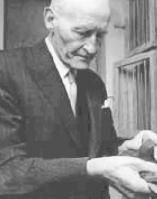 Cornelius Moerman, MD
Cornelius Moerman, MD
1893-1988
Hall of Fame 2005 The best word to describe the Dutch physician, Cornelius Moerman, would be “steadfast.” He withstood the strongest opposition of his colleagues during his entire professional life. Even today in the Netherlands, his name remains symbolic, forever connected to nutritional therapy, especially of cancer. Prior to World War II, Dr. Moerman published his view that cancer is not a local disease, but the tumor is the end stage of the deterioration of the total body. Strengthening the immune system, he said, is the answer to this disease, and nutrition plays the central role.
Moerman, a passionate pigeon-fancier, observed that healthy birds did not develop cancer, whereas the weak and malnourished ones did. He argued, based on his own experiments with his pigeons, that cancer was a derangement of metabolism, a deficiency of iodine, citric acid, B-vitamins, iron, sulphur, and the vitamins A, D, E and later C. A strictly proper diet, supplemented with these substances, forms the basis of the Moerman therapy.
Cutting-edge nutritional science has now caught up with Dr. Moerman’s viewpoint. His principles for the treatment of cancer were, at the time, revolutionary. In September, 1976, Moerman was invited by Linus Pauling to the conference of the International Association of Cancer Victors and Friends in Los Angeles. As the guest of honour, Moerman received an award for his valuable work with cancer patients and for his original approach to the treatment of cancer. Meeting Moerman, Dr. Linus Pauling praised him and considered him to be one of his peers in the fight for the acceptance of nutritional medicine.
Cornelius Moerman’s work lives on today in the “Moermanvereniging,” an ever-growing Dutch association of patients who advocate nutritional therapy for cancer.
Submitted by Dr. Gert Schuitemaker, President, ISOM
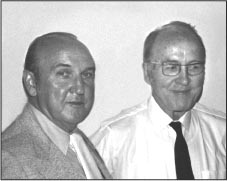
| Wilfrid Shute, M.D. | Evan Shute, M.D. |
| 1907-1982 | 1905-1978 |
| Hall of Fame 2004 |
In 1933 Drs. Wilfred and Evan Shute were some of the first doctors to use large doses of vitamin E to treat heart disease. At that time, antioxidants and free radicals were rather obscure concepts in the chemistry of oxidation, far removed from issues of health and disease. Also at that time, using vitamins to treat serious diseases such as heart disease and diabetes was considered by the medical establishment as misguided at best and outright fraud at worst. Yet thanks to the observant practitioners such as the Shutes who were more interested in what helped their patients most, medical researchers became motivated to study it scientifically. The results would speak for themselves.
For decades, vitamin E was lampooned as a “cure in search of a disease.” In 1985, Linus Pauling wrote: “The failure of the medical establishment during the last forty years to recognize the value of vitamin E in controlling heart disease is responsible for a tremendous amount of unnecessary suffering and for many early deaths. The interesting story of the efforts to suppress the Shute discoveries about vitamin E illustrates the shocking bias of organized medicine against nutritional measures for achieving improved health.” Dr. Pauling would most likely have appreciated this comment from a recent Harvard Health Letter: “A consistent body of research indicates that vitamin E may protect people against heart disease…The data generally indicate that taking doses ranging from 100 to 800IU per day may lower the risk of heart disease by 30%-40%.” Over half a century ago, the Shute brothers and colleagues showed that, with even higher doses than those, and with an insistence on the use of natural vitamin E, the results are better still.
Today’s growing appreciation of the role of d-alpha tocopherol in preventing and reversing cardiovascular disease is due primarily to the Shute brothers.
“We didn’t make vitamin E so versatile. God did. Ignore its mercy at your peril.”
”” Dr. Evan Shute
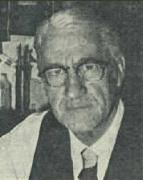 Frederick Klenner, MD
Frederick Klenner, MD
1907-1984
Hall of Fame 2005
“Vitamin C is the safest substance available to the physician.”
”” Frederick Klenner, M.D.
Born in Pennsylvania, Dr. Klenner received his medical degree from Duke University in 1936. After three years post-graduate training to specialize in diseases of the chest, Dr. Klenner continued his general practice. “His patients were as enthusiastic as he in playing guinea pigs to study the action of ascorbic acid. The first massive doses of ascorbic acid he gave to himself. Each time something new appeared on the horizon he took the same amount of ascorbic acid to study its effects so as to come up with the answers’ (Journal of Applied Nutrition, 23: 3 & 4, 1971).
Abram Hoffer writes: “In the early 1950s, Dr. Fredrick Klenner began his work with megadoses of vitamin C. He used doses up to 100 grams per day orally or intravenously. In clinical reports he recorded the excellent response he saw when it was given in large doses. For example, polio patients given vitamin C suffered no residual defects from their polio. A controlled study in England on 70 children, half given vitamin C and half given placebo, confirmed that none of the ascorbatetreated cases developed any paralysis while up to 20 percent of the untreated group did. This study was not published because the Salk Vaccine had just been developed and no one was interested in vitamins. Dr. Klenner’s work was ignored.”
Dr. Klenner was the first physician to emphasize that small amounts of ascorbate do not work. He said, “If you want results, use adequate ascorbic acid.” As a result of seeing consistent cures of a great variety of viral and bacterial diseases with huge doses of vitamin C, he published over twenty medical reports. Orthodox medicine’s rejection of his lifesaving work stands as a reminder to all medical mavericks practising today. “Some physicians,” Klenner wrote, “would stand by and see their patient die rather than use ascorbic acid because, in their finite minds, it exists only as a vitamin.”
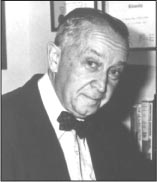 Irwin Stone, Ph.D.
Irwin Stone, Ph.D.
1907-1984
Hall of Fame 2004 Humanity can thank biochemist Irwin Stone for introducing Linus Pauling to vitamin C. Pauling spoke of this highly influential first contact, when Stone sent him “copies of some papers that he had just published, with the general title ‘Hypoascorbemia, a Genetic Disease’. . . The 3,000 milligrams per day that he recommended is 50 times the RDA. My wife and I began taking this amount of the vitamin … (and) the severe colds that I had suffered from several times a year all of my life no longer occurred. After a few years I increased my intake of vitamin C to 100 times; then 200 times, and then 300 times the RDA (now 18,000 mg per day).
“Among the several arguments Irwin Stone presented to support his thesis that the proper physiological intake of vitamin C is 50 or more times the RDA were two that especially impressed me. . . Almost all animal species ”” dogs, cats, cows, horses, elephants, and so on ”” have continued to synthesize ascorbate. . . The second fact that impressed me is that animals manufacture very large amounts of ascorbate. The amount manufactured is approximately proportional to the body weight, and, converted to the weight of a human being, ranges from about 2,000 to 20,000 milligrams per day. Irwin Stone concluded that human beings with an average diet are accordingly all suffering from hypoascorbemia, a deficiency of ascorbate in the blood and tissues.” (Linus Pauling in His Own Words : Selections from his Writings, Speeches and Interviews, edited by Barbara Marinacci. NY: Simon and Shuster, 1995). There could be no finer tribute to Irwin Stone than this.
In Memoriam: Irwin Stone, Ph.D.
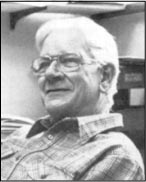 Carl C. Pfeiffer, M.D., Ph.D.
Carl C. Pfeiffer, M.D., Ph.D.
1908-1988
Hall of Fame 2004 “For every drug that benefits a patient, there is a natural substance that can achieve the same effect.” ”” Pfeiffer’s Law
Carl C. Pfeiffer made his first contribution in 1974, contributing 22 papers by the time he died in 1988. He made major contributions to the understanding of trace element and mineral metabolism in the schizophrenias; made a rational division of the schizophrenias into three biochemical groups, and discussed amino acids in medicine. His contributions were of the greatest value. Carl Pfeiffer was one of the original members of the Committee on Therapy of the American Schizophrenia Association.
“If there’s a drug that can alter the brain’s biochemistry, there’s usually a combination of nutrients that can achieve the same thing without side-effects,” said Dr. Pfeiffer, founding director of the Brain Bio Center in Princeton, New Jersey (1973). Dr. Pfeiffer spent most of his life researching for the causes and cure of mental illness. He found that biochemical imbalances in the body were the blame for many psychological problems. His study on more than 20,000 schizophrenic patients enabled him to divide schizophrenia into 3 biochemical groupings called histapenia, histadelia and pyroluric 2, 3.
Lendon Smith, MD, a supporter of the Pfeiffer approach, wrote: “Carl C. Pfeiffer, in his book, Nutrition and Mental Illness, listed well-known causes of schizophrenia. . . He said, ‘All of these are chemically-induced metabolic disorders, which suggests the strong possibility that the “true” schizophrenias left in the “wastebasket” might also be due to biochemical abnormalities.'” http://www.smithsez.com/Hypertension.html
Dr. Pfeiffers other books include Mental and Elemental Nutrients, The Healing Nutrients, Dr. Pfeiffers Total Nutrition, Nutritional Science and Cookery, and Neurobiology of the Trace Metals Zinc and Copper. His contributions to orthomolecular medicine live on through his writings, the clinics he inspired, and the annual Society of Ortho-molecular Medicine lecture that bears his name. A bibliography of Dr. Pfeiffers work is posted at http://www.doctoryourself.com/biblio_pfeiffer_ed.html
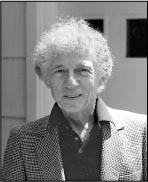 Alan Cott, M.D.
Alan Cott, M.D.
1910-1993
Hall of Fame 2004 Dr. Alan Cott fasted psychiatric patients while an attending physician at Gracie Square Hospital in New York City. In so doing, Lendon Smith, MD, writes that Dr. Cott was following the work of Dr. Yuri “Nicolayev of Moscow, who has fasted more than 10,000 mentally ill patients… The manic phase of manic depressive illness can be brought under control in the first week of a fast. Cott made them exercise by taking long walks. They drank two quarts of water every day as a minimum. If a patient failed to drink this amount, he terminated the fast… By the end of the first week, the medicines they had been on were usually discontinued.”
In addition to two popular books on supervised fasting, Dr. Cott wrote Dr. Cott’s Help for Your Learning Disabled Child: The Orthomolecular Treatment and was a frequent contributor to the Journal of Orthomolecular Psychiatry. His papers on Controlled Fasting Treatment for Schizophrenia and the Orthomolecular Approach to the Treatment of Learning Disabilities were presented at the Nutrition and Mental Health Hearing before the Select Senate Committee on Nutrition and Human Needs in 1977.
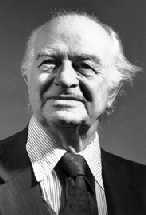 Linus Pauling, Ph.D.
Linus Pauling, Ph.D.
1901-1994
Hall of Fame 2004 “Linus Pauling was right.” ”” Associated Press
Orthomolecular medicine describes the practice of preventing and treating disease by providing the body with optimal amounts of substances which are natural to the body. Two-time Nobel Prize winner, and molecular biologist, Linus Pauling, Ph.D., coined the term “Orthomolecular” in his 1968 article “Orthomolecular Psychiatry” in the journal “Science”. Pauling described “Orthomolecular Psychiatry” as the treatment of mental disease by the provision of the optimum molecular environment for the mind, especially the optimum concentrations of substances normally present in the body.
It was a natural progression for Pauling, who had identified sickle-cell anemia as the first molecular disease and subsequently laid the foundation for molecular biology, to then develop a theory that explained the molecular basis of vitamin therapy.
Orthomolecular is a term made up of ortho, which is Greek for “correct” or “right” and molecule which is the simplest structure that displays the characteristics of a compound. So it literally means the “right molecule”.
Pauling later broadened his definition to include orthomolecular medicine, which he defined as “the preservation of good health and the treatment of disease by varying the concentration in the human body of substances that are normally present in the body”. He stressed the adjective orthomolecular is used to express the idea of the right molecules in the right concentration. Pauling firmly believed that daily supplementation of vitamins in optimum amounts, in addition to following a healthy diet, was the most important step that anyone could take to live a long and healthy life, and by following his own advice, he lived productively for 93 years.
“Professor Pauling as always is ahead of his time. The latest research on vitamin C substantiates his twenty-five years of advocacy and investigation on the benefits of vitamin C.” J. Daniel Kanofsky, MD, MPH, Albert Einstein College of Medicine.
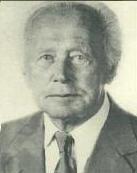 Josef Issels, MD
Josef Issels, MD
1907-1998
Hall of Fame 2005
“Dr. Issels is an intelligent and profound clinician, with principles and applications of medical treatment which 1 admire.”
”” Professor J. Anderson, King’s College Hospital, London
Dr. Josef Issels’ roots were in the German tradition of ‘Naturheilverfahren’ (natural practice). Because of his well-known professional skills, his kindness, and relatively high rate of survivors, many cancer patients in the terminal stage came to consult him. In 1951, one wealthy and grateful patient funded his private clinic, the Ringbergklinik in Rottach-Egern (Bavaria) with 36 beds. Issels’ successful work continued until 1960, when he was arrested by the German ‘Kriminalpolizei’ on the instigation of his medical opponents. He had to close down his clinic for years, in spite of a report from an independent scientist who had concluded that, of 252 terminal cancer patients with histologically proved metastases, 42 had survived for at least five years (17%) with the Issels therapy. For terminal patients, such a score is disproportionately high.
Issels believed that cancer was the end stage, the ultimate symptom, of a lifetime of immune system damage which had created an environment for the tumor to grow. Issels argued that conventional therapy just looked at the tumor without recognizing this longtime preconditioning period. Just cutting out or irradiating the tumor “mit Stahl und Strahl” (“with scalpel and radiation”) was not eradicating cancer. Instead, Dr. Issels saw the body as having great potential to heal itself. Good nutrition and a clean environment were central to his therapy. Like Dr. Max Gerson, he recognized the importance of detoxification.
In the end, Issels was proven to be right. From 1967 to 1970, Professor J. Anderson of King’s College Hospital and member of the World Health Organization inspected Issels’ reopened clinic. He confirmed the highly significant survival rate of Issels’ terminal cancer patients. His legacy is continued by the work of his wife, Ilsa and his son Christian.
Submitted by Dr. Gert Schuitemaker, President, 1S0M
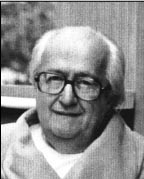 William Kaufman, M.D., Ph.D.
William Kaufman, M.D., Ph.D.
1910-2000
Hall of Fame 2004 “I noted that niacinamide (alone or combined with other vitamins) in a thousand patient-years of use has caused no adverse side effects.”
Dr. William Kaufman was among the very first physicians to therapeutically employ megadoses of vitamin B3 (niacin, or niacinamide). He prescribed as much as 5,000 mg of niacinamide daily, in many divided doses, to dramatically improve and restore range of joint motion in arthritic patients. This groundbreaking work remains important to this day. In his 1949 book, The Common Form of Joint Dysfunction, Kaufman published the details of his niacinamide arthritis treatment, which also incorporated the use of vitamin C, thiamin, and riboflavin, all in large doses. He kept meticulous patient records that repeatedly verified the safety and effectiveness of megavitamin therapy.
Over 50 years ago, Kaufman showed remarkable foresight half a century into the future of orthomolecular medicine, describing how the lack of a just a single nutrient can cause diverse diseases, including what is now known as attention-deficit hyperactivity disorder. Charlotte Kaufman lovingly writes of her husband, “He was always ready to help someone else. He truly was a healer and a problem solver. He played the piano; he loved Mozart. He wrote poems, plays, essays, and subscribed to about 30 medical journals, which he read. He practiced medicine in his own way, without regard to fads or fashion. He seemed to know intuitively what the clinical answers were, but he was a thoughtful person who did not make decisions lightly. He was an independent thinker who was constantly studying and learning, not just from the printed word, but from his patients. He really listened to his patients. His main objective was to help people live healthy lives.”
Dr. Kaufman’s bibliography is posted at http://www.doctoryourself.com/biblio_kaufman.html
 Emanuel Cheraskin, MD, DMD
Emanuel Cheraskin, MD, DMD
1916-2001
Hall of Fame 2005
“Man is a food-dependent creature. If you don’t feed him, he will die. If you feed him improperly, part of him will die.”
”” Emanuel Cheraskin
Emanuel Cheraskin, born in Philadelphia, received his M.D. from the University of Cincinnati College of Medicine. He was awarded his D.M.D in the first graduating class of University of Alabama School of Dentistry, where he would stay on for several decades as Chairman of the Department of Oral Medicine. Dr. Cheraskin was among the very first to recognize and demonstrate that oral health indicates total body health. He wrote over 700 scientific articles and authored or coauthored 17 textbooks, plus eight more books for the public, including the bestseller “Psychodietetics: Food as the Key to Emotional Health.” His last two books, Vitamin C: Who Needs It? and Human Health and Homeostasis were published when he was past eighty. In addition to being a professor, physician and prolific author, Dr. Cheraskin was a singularly popular speaker. “Health is the fastest growing failing business in western civilization,” he said. “Why is it so many of us are 40 going on 70, and so few 70 going on 40?” The answer, he said, was our neglect of the paramount value of nutrition, an educational deficiency that Dr. Cheraskin devoted a lifetime to eradicating. Longtime friend Dr. Abram Hoffer writes: “Emanuel Cheraskin was a great scientist, investigator and physician. His papers are models of brevity, scientific clarity and productivity.”
Dr. Cheraskin’s educational legacy continues through the Cheraskin Archive in upstate New York, which contains the doctors lecture slides and copies of his papers in the care of Andrew Saul. His complete bibliography of books and papers is posted online at www.doctoryourself.com/biblio_cheraskin.html.
“Cherri,” a regular speaker at the Nutritional Medicine Today Conferences, was always informative and entertaining. He last presented in Vancouver for our 25th conference in 1996, where he received the Orthomolecular Medicine Physician of the Year Award.
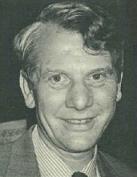 David Horrobin, MD, PhD
David Horrobin, MD, PhD
1939-2003
Hall of Fame 2005 David Horrobin was one of the most original scientific minds of his generation. His study of human physiology lead him to investigate the role of fatty acids and their derivatives in human disease. He applied his vast knowledge of lipids to investigate their therapeutic potential in medicine. David was a scholar of Balliol College, Oxford, where he obtained a First Class Honours medical degree. To this he added a clinical medical degree and a doctorate in neuroscience. He was a fellow of Magdalen College where he taught medicine alongside Dr. Hugh Sinclair, one of the pioneers in the field of essential fatty acids. After further research on EFAs at the universities of Newcastle and Montreal, he became increasingly fascinated in lipid biochemistry and its application to human disease.
Throughout his travels in East Africa and work in Kenya, he developed the kernel of thought about fatty acids, schizophrenia and its role in evolution. He later elaborated this idea in his 2001 book, The Madness of Adam and Eve, which was short-listed in 2002 for the Aventis Science Book of the Year. Abram Hoffer wrote: “This is a remarkable book. I agree with his interpretation that schizophrenia is an evolutionary advantage and that its genes are slowly moving into the general population.”
David was the founder and Editor of Medical Hypotheses, a forum for the dissemination of new ideas in medicine. He was also the founder and Editor of the journal Prostaglandins, Leukotrienes, and Essential Fatty Acids. He was a prolific writer who authored and edited numerous books on a wide range of subjects, as well as contributing to over 800 scientific publications. He served as Medical Adviser and President for the Schizophrenia Association of Great Britain. He also served on the board of the International Schizophrenia Foundation from 1998-2003.
Dr. Horrobin was a favourite speaker at the annual Nutritional Medicine Today Conference, where his presentations were models of clarity and logic.
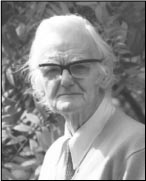 Humphry Osmond, M.D.
Humphry Osmond, M.D.
1917-2004
Hall of Fame 2004 Linus Pauling wrote: “In 1967, I happened to read a number of papers published by two psychiatrists in Saskatchewan, Canada. Dr. Abram Hoffer and Dr. Humphry Osmond. (T)here was something extraordinary about their work. They were giving very large amounts of niacin to the schizophrenic patients, as much as 17,000 milligrams per day, which is 1,000 times the RDA. I was astonished that niacin and ascorbate, with the striking physiological property, when given in very small amounts, of preventing death from pellagra and scurvy, should be so lacking in toxicity that 1,000 times the effective daily intake could be taken by a person without harm. This meant that these substances were quite different from drugs, which are usually given to patients in amounts not much smaller than the lethal dosages.
I thought that these substances, normally present in the human body, and required for good health and life, deserved a name to distinguish them from ordinary Pharmaceuticals, and I decided to call them ‘orthomolecular’ substances.” (Linus Pauling in His Own Words: Selections from his Writings, Speeches and Interviews, edited by Barbara Marinacci. NY: Simon and Shuster, 1995.)
Dr. Humphry Osmond’s remarkable medical career included decades of distinguished psychiatric practice and a prodigious output of writing and research. He is widely recognized as a pioneer investigator into the chemistry of consciousness. Along with Dr. John Smythies, Osmond developed the theory that schizophrenics suffer due to endogenous production of an adrenalin-based hallucinogen. This led to the Hoffer-Osmond Adreno-chrome Hypothesis in the early 1950s, the very origin of orthomolecular medicine. The popular press may today remember Humphry Osmond for coining the term “psychedelic,” but countless thousands of grateful patients will remember him as the co-discoverer of niacin therapy for schizophrenia. A bibliography of Dr. Osmond’s work is posted at http://www.doctoryourself.com/biblio_osmond.html
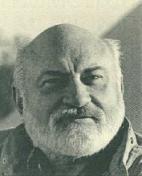 Hugh Desaix Riordan, M.D.
Hugh Desaix Riordan, M.D.
1932-2005
Hall of Fame 2005
A Poetic Tribute to Abram Hoffer and Orthomolecular Medicine
“Hugh Riordan was an amazing influence on my family and on all who knew him.”
”” Julie Hilton, The Hilton Family Foundation
Of all the medical mavericks, Hugh Riordan was one of the most knowledgeable, both as a maverick par excellence and as an historian of mavericks. Hugh was an orthomolecular fighter, who fought hard and consistently on behalf of orthomolecular concepts. He was challenged legally when he wanted to treat his patients with high dose vitamins in the hospital. He won. He was the first to demonstrate how large doses of vitamin C are chemotherapeutic for cancer patients. He was a pioneer in establishing the new vitamins-as-treatment paradigm.
“We worked together on the editorial board of the Journal of Orthomolecular Medicine, and on the board of the International Schizophrenia Foundation. Hugh joined the editorial board of JOM in 1991, then became Associate Editor in 2000. He published several books, including three volumes of Medical Mavericks, and about 70 clinical and research reports. His main work had to do with the schizophrenic syndrome and with the treatment of cancer using nontoxic vitamin C chemotherapy. Hugh was the leader in making available to cancer patients a treatment that is effective, safe, economical and very tolerable. Few oncologists have ever seen these advantages unless they visited Hugh’s clinic. The vitamin C intravenous chemotherapy studies established so well by Dr. Riordan are being continued at the University of Kansas and McGill University, Montreal. In 2002, Hugh was honored by International Society for Orthomolecular Medicine with the “Orthomolecular Physician of the Year” award. He worked tirelessly, founding and developing the Center for the Improvement of Human Functioning International Inc. as a superb treatment center.” This year, the Center celebrates its 30th anniversary. Hugh’s dedicated staff of more than 70 like-minded medical mavericks continue their founder’s pioneering work. (www.brightspot.org)
Submitted by Abram Hoffer, M.D., Ph.D.
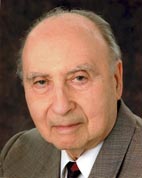 Abram Hoffer, M.D., Ph.D., is an internationally recognized physician, author, medical researcher and pioneer in the use of vitamins and nutrients to treat disease. Dr. Hoffer has spent the past five decades conducting research related to the practice of orthomolecular medicine, which emphasizes the use of nutrients in optimum doses for the treatment of a wide range of diseases. His medical discoveries have been the topic of more than a dozen books and literally hundreds of research papers. In 1952 he and his colleagues began developing a more effective treatment for schizophrenia that involved a biochemical hypothesis. They tried two nutrients: vitamin C and vitamin B3. He found that we could halve the two-year recovery rate of patients just by adding these vitamins to the program. This was the first major systematic attempt to use large dosages of vitamins therapeutically. In 1955 he also discovered that niacin lowered cholesterol levels.
Abram Hoffer, M.D., Ph.D., is an internationally recognized physician, author, medical researcher and pioneer in the use of vitamins and nutrients to treat disease. Dr. Hoffer has spent the past five decades conducting research related to the practice of orthomolecular medicine, which emphasizes the use of nutrients in optimum doses for the treatment of a wide range of diseases. His medical discoveries have been the topic of more than a dozen books and literally hundreds of research papers. In 1952 he and his colleagues began developing a more effective treatment for schizophrenia that involved a biochemical hypothesis. They tried two nutrients: vitamin C and vitamin B3. He found that we could halve the two-year recovery rate of patients just by adding these vitamins to the program. This was the first major systematic attempt to use large dosages of vitamins therapeutically. In 1955 he also discovered that niacin lowered cholesterol levels.
Today, in his mid-eighties, Dr. Hoffer continues to practice medicine, prescribing orthomolecular regimens to patients in Victoria, British Columbia, Canada. He is also the Editor-in-Chief of the Journal of Orthomolecular Medicine.
More about Dr. Hoffer””his biography, books, research papers and homepage.

